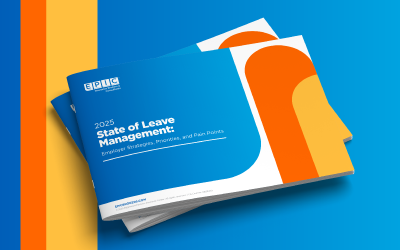Quick Facts
- Recently passed legislation and related regulatory guidance will require insurers and group health plans to provide new information detailing provider reimbursement rates.
- Beginning in 2022, insurers and health plans must publicly post three reimbursement rate data files.
- Beginning in 2023, at the request of a participant, plans and insurers must disclose in advance an estimate of the participant’s expected cost-sharing for covered items or services.
- Most employers who sponsor a group health plan generally do not have access to provider reimbursement rates and will need to rely on their insurance carrier or TPA to provide the data necessary to comply.
- On August 20, 2021, the Departments released a set of frequently asked questions (FAQs) that delayed certain transparency in coverage requirements.
Recently passed legislation and related regulatory guidance will require insurers and group health plans to provide new information detailing provider reimbursement rates. Treatment cost estimates will also need to be provided in advance to plan participants. Responsibility for much of what is required by these new rules will rest with the insurance carrier or the plan’s third-party administrator (TPA). This summary is designed to help employers prepare for their role in the implementation of the requirements and understand the impact they may have on their plans.
Background
The health plan cost transparency rules (the transparency rules) contain two principal requirements. First, carriers and health plans will need to make a data file publicly available that will provide detailed data on plan reimbursement rates for different providers. Second, plans will need to provide an advanced estimate of the cost to participants for medical services covered by the plan.
It is important to note that employers who sponsor a group health plan generally do not have access to provider reimbursement rates. For fully insured plans, the carrier will be required to produce the data files and provide the advanced cost estimate. However, for self-funded plans, the employer will still be responsible to ensure their plan complies. In these cases, employers will need to depend on their TPA to produce the provider reimbursement data necessary to comply.
On August 20, 2021, the Departments released a set of FAQs that delayed certain transparency in coverage requirements. The requirement to make this information publicly available was originally effective for plan years beginning on or after January 1, 2022, but the requirement to post information about in-network provider rates and out-of-network allowed amounts is delayed until July 1, 2022, and the requirement to post information about prescription drug coverage prices is delayed indefinitely until further guidance is provided.
Cost Data Files
- Beginning in 2022, insurers and health plans must publicly post three reimbursement rate data files.
- The In-Network Rate File – All applicable rates paid to in-network providers for all covered items and services (including negotiated rates, underlying fee schedules, etc.);
- The Allowed Amount File – Billed charges and allowed amounts for covered items and services provided by out-of-network providers; and
- The Prescription Drug File – Negotiated rates and historical prices for prescription drugs furnished by in-network providers.
The files must be updated monthly and made publicly available on an insurer’s or plan’s website free of charge. As stated earlier, employers, even self-funded employers, generally do not have access to provider reimbursement arrangements. Fully insured employers will be able to rely on the carrier to produce and make public these files. However, self-funded employers should check with their TPA to ensure that they will be capable of producing the required data on behalf of the employer-sponsored health plan.
Advanced Cost Estimate Disclosure
Beginning in 2023, at the request of a participant, plans and insurers must disclose in advance an estimate of the participant’s expected cost-sharing for covered items or services. The estimate must consider the participant’s plan design and the reimbursement arrangement for that particular provider. It may be helpful to think of this requirement as providing a participant with an advanced explanation of benefits (EOB) that attempts to estimate what the participant will pay out-of-pocket for upcoming or planned medical care. This disclosure can only be an estimate and will not necessarily reflect actual amounts the patient is charged once the medical care is provided.
The cost estimate disclosure must include the following seven elements:
- Estimated Participant Cost-Sharing Liability;
- The Participant’s Accumulated Amounts;
- In-Network Contractual Rates;
- Out-Of-Network Allowed Amounts;
- Content List of Items and Services for A Bundled Payment Provider Arrangement;
- A Notice of Prerequisites (e.g. pre-auth requirements) To Coverage; and
- A Disclosure Notice.
Most employers will not have the data or technology required to produce these cost estimate disclosures. As with the data files, carriers will be responsible for producing the cost estimates for fully insured plans. Self-funded employers will need to work with their TPA or other service provider to prepare these “advanced EOBs.”
Summary
Most employers feel that cost transparency is generally a positive development, and advanced estimates of out-of-pocket costs will help participants plan for the financial impact of medical care. However, making the reimbursement rates that plans and carriers pay to various providers publicly available has the potential to significantly change the nature of health plan and provider relationships. It remains to be seen what kind of impact this will have on health plan costs going forward.
Read the related Compliance Insights article, Updates on Provisions of the Transparency in Coverage Rules & Consolidated Appropriations Act
EPIC Employee Benefits Compliance Services
For further information on this or any other topics, please contact your EPIC consulting team.
Learn About Our Employee Benefits Compliance Services
EPIC offers this material for general information only. EPIC does not intend this material to be, nor may any person receiving this information construe or rely on this material as, tax or legal advice. The matters addressed in this document and any related discussions or correspondence should be reviewed and discussed with legal counsel prior to acting or relying on these materials.
DOWNLOADABLE RESOURCES
Sign up for our Compliance Matters Newsletter
You’ll receive our monthly newsletter, as well as special compliance alerts and invitations to our compliance webinars
Related Content
Products
Employee Benefits Consulting
Our dedicated benefits team is focused on delivering better outcomes – to both your benefits program and ...
Products
Compliance
We provide comprehensive consulting services and in-depth education regarding the ever-changing employee ...
Products
Actuarial
Our Actuarial Team provides guidance on employee benefits and health and welfare programs to help meet ...


